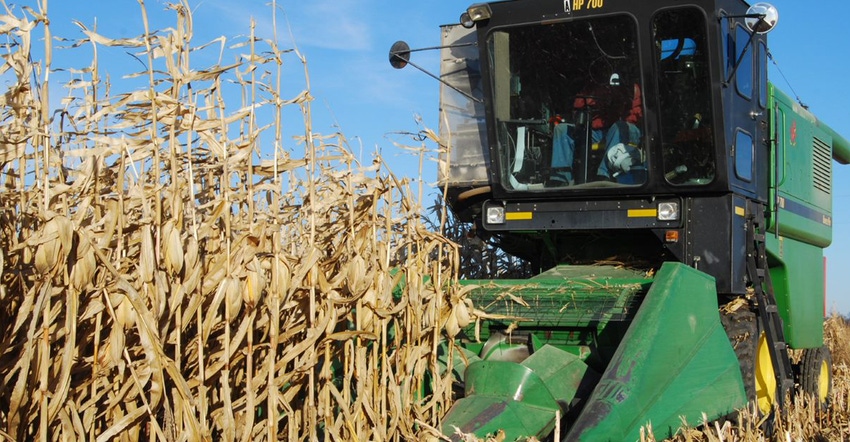November 26, 2019

As the tumultuous 2019 growing season comes to a close for Iowa farmers, preparation and keen decision making is initiated for the upcoming 2020 growing season. Choosing the right corn hybrids every year is a top priority especially given the continuing crop market challenges. Hybrid selection is critically important for 2020, as it encompasses about 18% of total production cost of a corn-soybean rotation.
As you start the process of determining which hybrids to select for planting in 2020, there are a number of factors to consider. Top priorities on the list should be yield potential of the hybrids, hybrid yield consistency and hybrid maturity.
Other factors are genetic diversity of hybrids, agronomic characteristics and transgenic trait packages. Yield or yield potential is, without a doubt, the most important factor when selecting hybrids. The newer hybrids on the market will possibly offer more yield potential compared to older hybrids. It’s important to do your homework and reevaluate your choices each year to maximize profit.
As you determine which hybrids work best on your farm, look for hybrids that have consistently high yield performance from location to location and year to year. To ensure this, look at multiple data sources, including public hybrid trials, such as those conducted by the Iowa Crop Improvement Association, as well as by seed companies, retailers and Farmers’ Independent Research of Seed Technologies (FIRST).
Choose consistent performers
University trials are helpful because they can compare yield potential of hybrids from multiple brands in a more rigorous plot design compared to hybrid strip trials. Also, look at local information from your own performance trials, strip trials from other farmers and neighbors, FFA clubs, and local cooperatives. Use as much data as you can to ensure a reliable and profitable hybrid choice. While analyzing the data, look for consistent yield performance.
Also, look for trials that evaluate hybrids over multiple locations. Multiple testing locations in a single year represent possible weather patterns your farm may encounter in the future. Weather variability influences hybrid performance more than any other variable, because weather interacts with most of the yield limiting factors. If a hybrid performs consistently well over many sites (i.e., weather patterns), it will likely perform well on your farm.
There are a couple of ways to determine a consistent yield performance from yield data. The first way is to look for hybrids that consistently yield 5% above the average yield of trials they’re entered in. A second way is to look for hybrids that consistently yield at least 90% of the maximum yielding hybrid in a trial.
Plant different maturities
It’s important to consider planting a range of hybrid maturities on your farm. Although full-season hybrids generally produce the greatest yields when planted early, many short-season hybrids are drier at harvest and help offset drying costs, as well as produce yields competitive with full-season hybrids. Also, consider that weather is often more favorable with an earlier harvest for shorter-season hybrids.
Planting several hybrid maturities each year spreads the harvest season and reduces the risk of losses from moisture stress at pollination or early frost termination. A hybrid maturity mix of 25% short-season, 50% medium-season and 25% full-season hybrids (with a 10-day range in relative maturity from short season to full season) is optimum for avoiding weather risk and for timely harvest management.
Select team of hybrids
Another smart decision is to choose various hybrids that are agronomically and genetically diverse from one another. This helps offset the weakness that any one hybrid may have in a given growing season against environmental and agronomic influences. 2019 is an example of weather patterns that require the right team of hybrids to be successful.
In north-central and northeast Iowa, we started out cold and wet, causing planting to be delayed a week to two weeks behind average. This coupled with an excessive amount of rain during the early portion of the growing season, followed with a dry period in the middle of it, put some Iowa counties on the drought monitor.
Late in the season, we had excessive rainfall in September, with a propane shortage for corn harvest in November, which has caused corn to stand in the field longer than intended. This brings standability and stalk quality to the forefront of concern.
Just like this past year has taught us, each growing season throws its own challenges and trials at us that one hybrid alone cannot win. Developing a portfolio of diverse hybrids is important, as the cumulative flexibility of the hybrids on your farm as a whole allows for the greatest yield potential to be obtained. For most farms, choosing four or five different hybrids is recommended, but for larger farms you may want to consider more than that.
Consider field conditions
Agronomic characteristics such as previous crop and rotation, soil type, tillage practices, desired harvest moisture, and pest problems determine the importance of which traits and specific agronomic strengths to select for.
For example, if you are planting into environments seeded with cover crops, high residue situations, or soils that are usually cold and wet in spring, you want to select a hybrid with a high early-season vigor rating. This is especially true if you’re planting a full-season hybrid early in the planting season, where cold-wet soils usually predominate.
Corn following corn dictates that you select hybrids that have a strong resistance to foliar diseases like gray leaf spot or northern corn leaf blight. Profitability is increased by matching your agronomic practices with the appropriate hybrids and transgenic traits to meet your specific requirements.
There are many transgenic options available to growers in Iowa. Mark Licht, ISU Extension cropping system specialist, advises: “Many hybrids have traits for insect protection and most have herbicide traits. Think about whether you need all of the traits or will use the traits that are available in a given hybrid. And evaluate whether transgenic hybrids would be more beneficial to your crop compared to conventional hybrids.
“Transgenic hybrids have been very successful where insect resistance and herbicide resistance has not become an issue. Consider what genetic traits are useful and effective in your fields.”
When selecting hybrids, prioritize for yield potential, yield consistency, and a range of hybrid maturities that allow an eight- to 10-day spread between the first and last hybrids to be planted. At the same time, select a mix of hybrids that are both genetically and agronomically diverse from one another as part of your risk management plan to help withstand variable growing conditions and environments.
Carefully assess and evaluate hybrids for specific characteristics needed such as disease resistance, potential drydown, standability, root strength, early-season vigor, etc. Also, only choose the transgenic traits you need for your farm to reduce costs and risks of resistance development.
Basol is an ISU Extension field agronomist at Nashua in northeast Iowa. Contact him at [email protected].
About the Author(s)
You May Also Like






